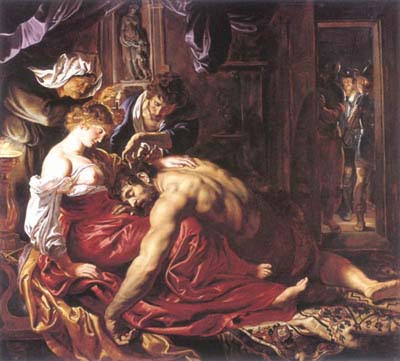“Rubens: Master in the Making”, which opened last week at the National Gallery, tells the unlikely tale of how a relative nobody from the artistic backwaters of Antwerp turned himself into one of the most extraordinary painters who ever lived. The show is a kind of sequel to last year’s main exhibition at the National Gallery, which, in a similar vein, was devoted to Raphael’s formative years. There is doubtless an element of expediency behind this particular curatorial strategy – it is easier to borrow the juvenilia of an Old Master than it is to obtain the masterpieces of his maturity – but in each case it has proved entirely justified. The Rubens show, like the Raphael show before it, brings a remarkable artist to life in an original and moving way.
It opens with Rubens in his native Antwerp, aged twenty one, doing his level best to compete with the Italian Renaissance masters who had come before him – artists whose works he can only have known, at that time, from black-and-white engravings. The Battle of the Amazons, painted in around 1598, is Rubens’ answer to Leonardo da Vinci’s Battle of Anghiari, Michelangelo’s Battle of Cascina and Raphael’s Battle of Constantine. It is not, in truth, a very convincing answer, this muddied flurry of convulsed and warring bodies, disturbing the peace in a low-toned landscape – a landscape which Rubens, still unsure of his own ability to depict light and atmosphere, persuaded his Flemish friend Jan Brueghel the Elder to paint for him. Elements of the style that would soon enough come to be known as “Rubensian” are undoubtedly present. There is sex and violence aplenty, with rape and pillage conspicuously to the fore. The composition is action-packed, packed even to the point of congestion. Figures...

Rubens: Master in the Making, at The National Gallery 2005
30-10-2005

